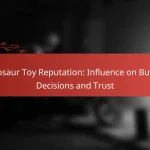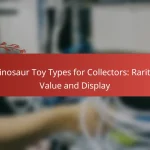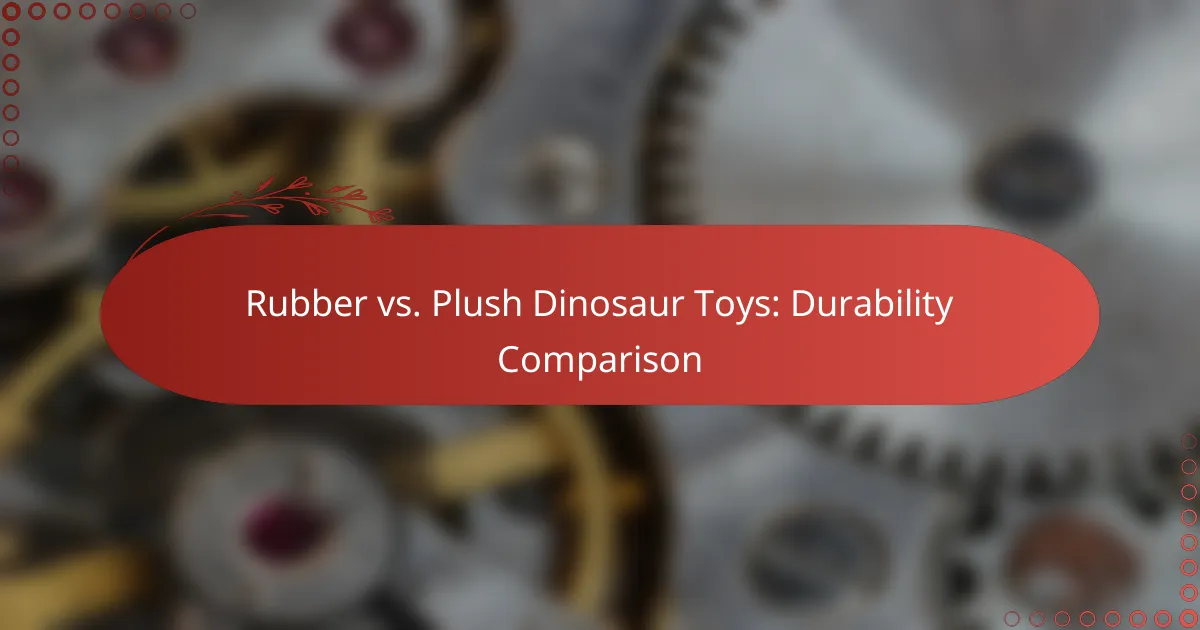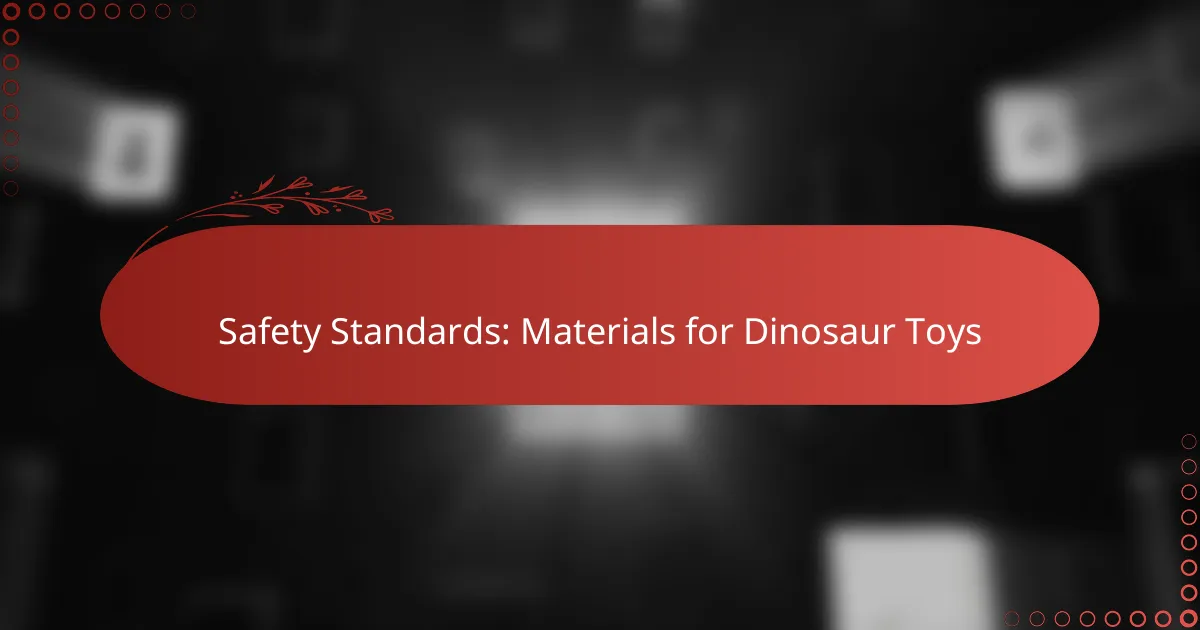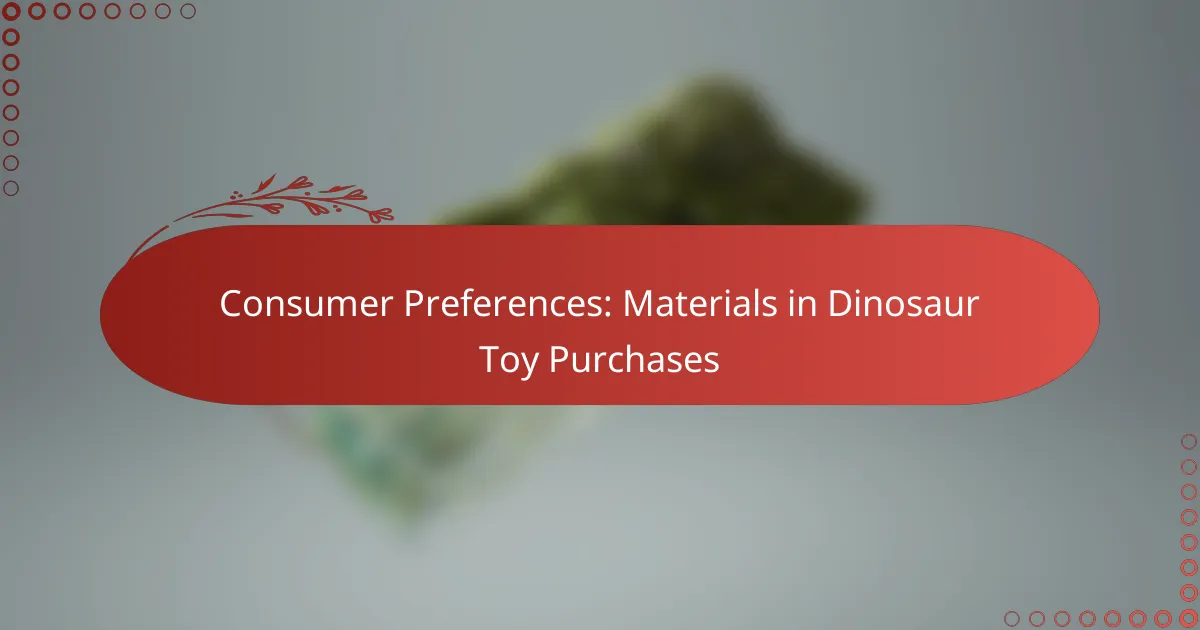When choosing between rubber and plush dinosaur toys, durability is a key factor to consider. Rubber toys are built to endure rough play and outdoor conditions, making them a long-lasting option for active children and pets. In contrast, plush dinosaur toys provide comfort and emotional support, but they may not hold up as well under intense use.
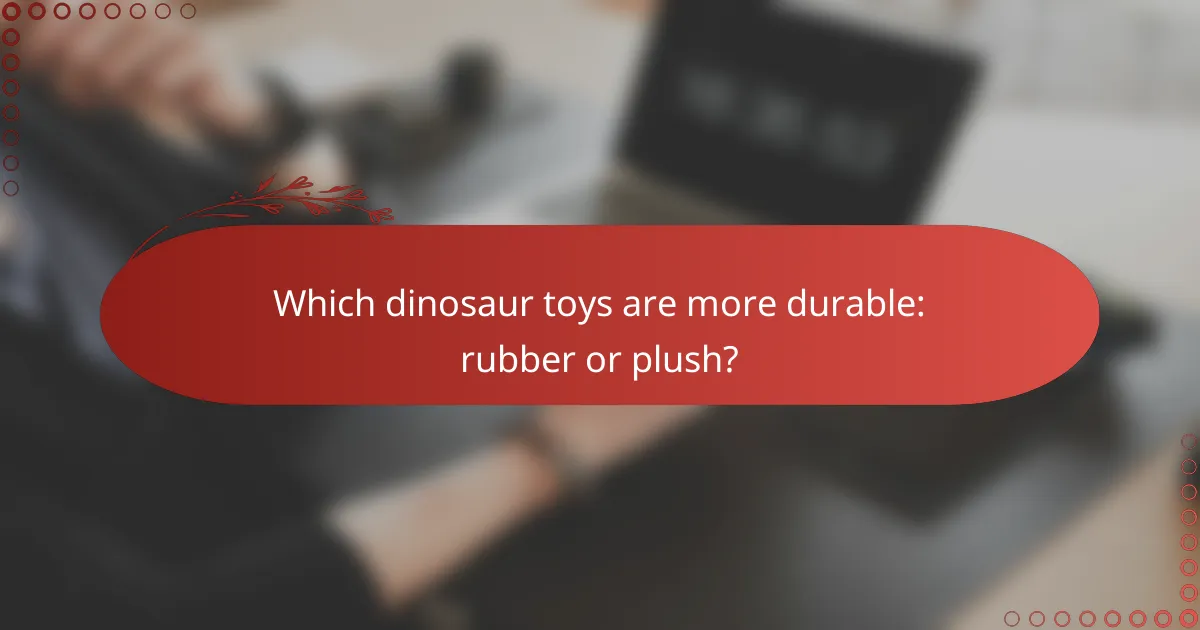
Which dinosaur toys are more durable: rubber or plush?
Rubber dinosaur toys are generally more durable than plush ones, making them better suited for rough play. Their sturdy construction allows them to withstand biting, chewing, and outdoor conditions, while plush toys tend to wear out faster under similar circumstances.
Rubber toys withstand rough play
Rubber dinosaur toys are designed to endure aggressive handling and rough play. They are often made from high-quality, flexible materials that resist tearing and puncturing, making them ideal for active children or pets. For instance, rubber toys can last for months or even years with proper care.
When selecting rubber toys, look for those labeled as non-toxic and BPA-free, especially for younger children. This ensures safety during playtime, while still providing a durable option that can handle the wear and tear of daily use.
Plush toys are softer but less durable
Plush dinosaur toys offer a softer, more cuddly experience, but they are typically less durable than their rubber counterparts. The fabric and stuffing can easily get damaged from rough handling, leading to tears or loss of shape. While they can be great for gentle play and comfort, they may need replacing more frequently.
For parents considering plush toys, it’s wise to choose those with reinforced seams and high-quality stitching. This can help extend the life of the toy, but keep in mind that even the best plush toys may only last a few months under heavy use.
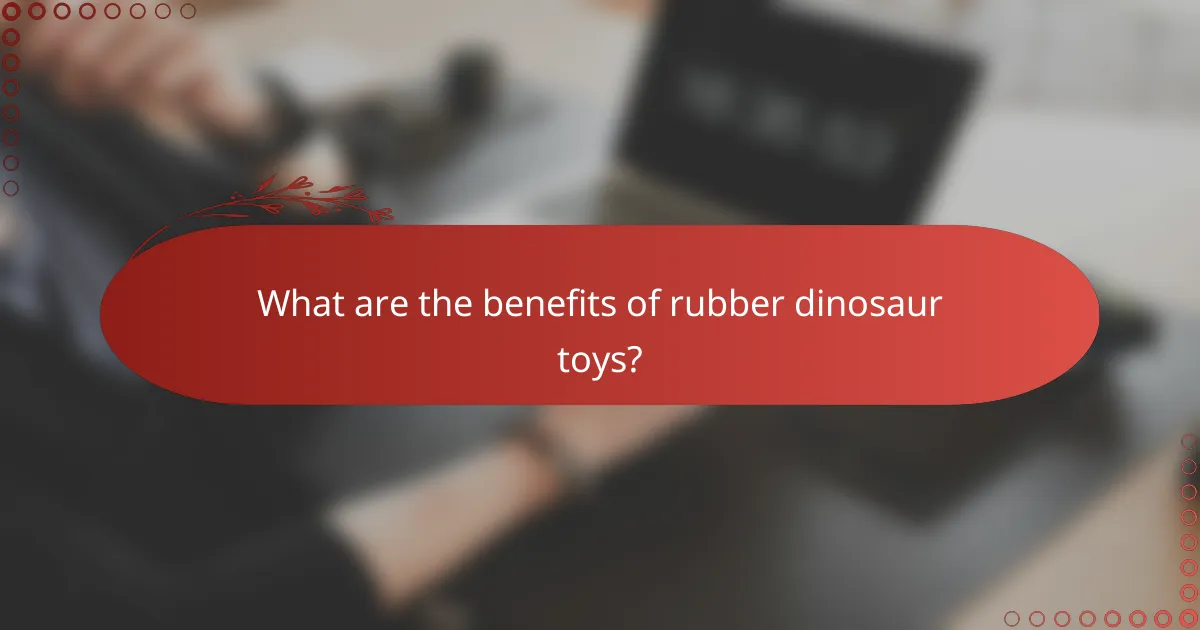
What are the benefits of rubber dinosaur toys?
Rubber dinosaur toys offer several advantages, particularly in terms of durability and maintenance. They are designed to withstand rough play, making them a popular choice for children and pets alike.
Water-resistant and easy to clean
Rubber toys are inherently water-resistant, which makes them suitable for outdoor play and water activities. This feature prevents water damage and mold growth, ensuring the toy remains safe and hygienic.
Cleaning rubber dinosaur toys is straightforward; a simple rinse with soap and water usually suffices. For tougher stains, a mild disinfectant can be used without damaging the material.
Long-lasting and chew-proof
Rubber dinosaur toys are known for their long-lasting nature, often outlasting plush alternatives. Their robust construction makes them resistant to wear and tear, even with aggressive chewing.
Many rubber toys are specifically designed to be chew-proof, catering to pets that tend to destroy softer materials. This durability means fewer replacements and better value over time.

What are the benefits of plush dinosaur toys?
Plush dinosaur toys offer numerous benefits, particularly in terms of comfort and emotional support for children. Their soft texture and friendly designs make them ideal companions for playtime and bedtime.
Soft and cuddly for comfort
The primary appeal of plush dinosaur toys lies in their soft and cuddly nature, which provides a sense of security for children. These toys are often made from materials like polyester or cotton, making them gentle against the skin.
Many children find comfort in hugging or snuggling with plush toys, which can help reduce anxiety and promote relaxation. This tactile experience is especially beneficial during stressful situations, such as bedtime or when facing new environments.
Variety of designs and colors
Plush dinosaur toys come in a wide range of designs and colors, catering to different preferences and personalities. From vibrant greens and blues to pastel shades, there are options that appeal to various tastes.
This variety allows children to choose a dinosaur that resonates with them, enhancing their emotional attachment. Additionally, some plush toys feature unique designs, such as different species or themed outfits, which can spark imaginative play and storytelling.
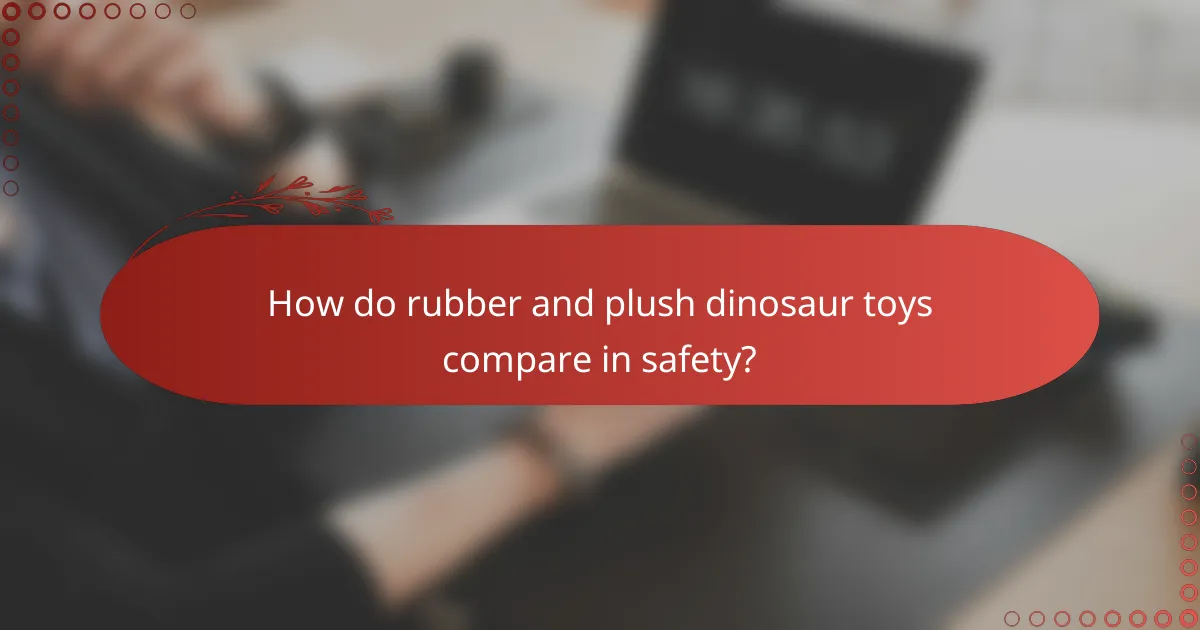
How do rubber and plush dinosaur toys compare in safety?
Rubber dinosaur toys are generally considered safer than plush toys due to their non-toxic materials and durability. Plush toys, while soft and cuddly, can pose choking hazards, especially for younger children or pets.
Rubber toys are non-toxic and safe for pets
Rubber dinosaur toys are made from materials that are often free from harmful chemicals, making them a safe choice for pets. They are designed to withstand chewing and rough play, reducing the risk of small parts breaking off and causing choking.
When selecting rubber toys, look for those labeled as BPA-free or phthalate-free to ensure safety. Brands that comply with safety standards, such as ASTM or EN71, provide additional assurance of non-toxicity.
Plush toys may have choking hazards
Plush dinosaur toys can present choking risks, particularly if they contain small parts like buttons or plastic eyes. These components can detach over time, posing a danger to young children and pets who may chew on them.
To minimize risks, choose plush toys that are specifically designed for young children or pets, ensuring they are free from small detachable parts. Regularly inspect plush toys for wear and tear, and discard any that show signs of damage.
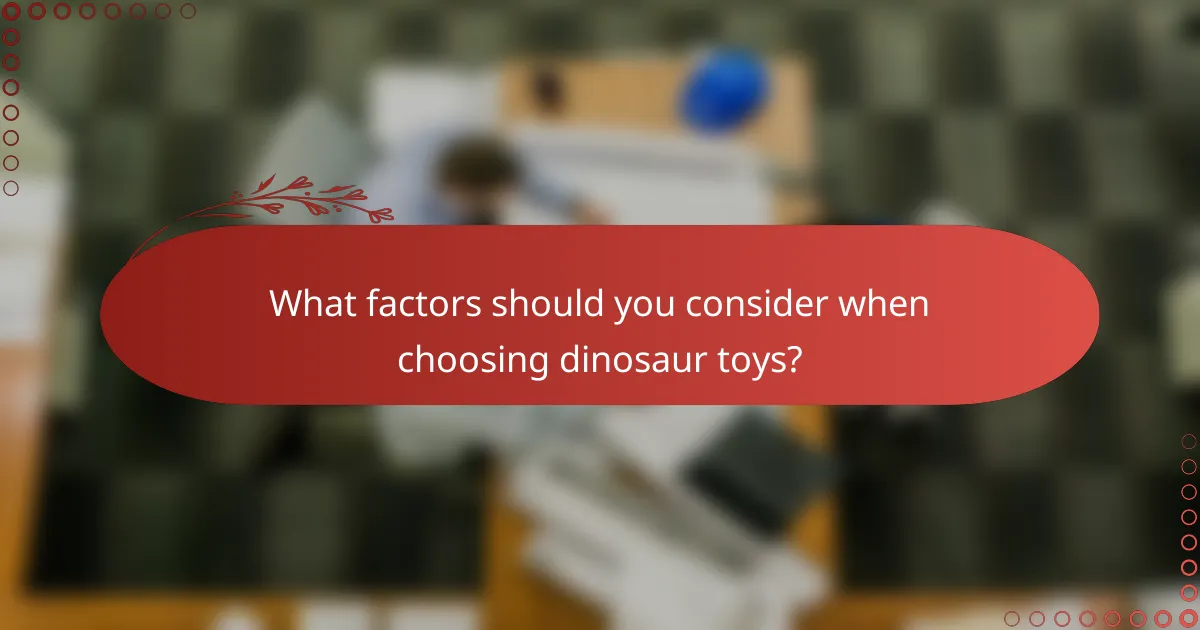
What factors should you consider when choosing dinosaur toys?
When selecting dinosaur toys, consider durability, safety, and the intended play style. Rubber and plush materials offer different benefits, impacting longevity and user experience.
Age appropriateness and safety standards
Choosing dinosaur toys that meet age appropriateness and safety standards is crucial for ensuring safe play. Look for toys labeled with age recommendations, typically ranging from 3 years and up for small parts. Additionally, check for compliance with safety regulations such as ASTM or EN71, which indicate that the toy has been tested for harmful substances.
Rubber toys are often more durable and can withstand rough play, making them suitable for older children. Plush toys may be better for younger kids, but ensure they are free from choking hazards and made from non-toxic materials.
Intended use and play style
The intended use and play style significantly influence your choice between rubber and plush dinosaur toys. If the toy is meant for outdoor play or rough handling, rubber toys are typically more resilient and can endure various weather conditions. They are also easier to clean, which is an advantage for active play.
On the other hand, plush dinosaur toys are ideal for imaginative play and comfort. They provide a softer touch and can be used for cuddling, making them suitable for younger children or for use in a calming environment. Consider the child’s play habits to select the most appropriate material.

What are the price ranges for rubber and plush dinosaur toys?
The price ranges for rubber and plush dinosaur toys vary significantly. Rubber toys typically cost more due to their durability, while plush toys are generally more affordable, making them accessible for various budgets.
Rubber toys typically range from $10 to $30
Rubber dinosaur toys are designed to withstand rough play, which contributes to their higher price point. Most options fall within the $10 to $30 range, depending on size, brand, and features such as squeakers or textured surfaces.
When selecting rubber toys, consider their durability and safety standards. Look for products that are free from harmful chemicals and meet safety regulations, especially if they are intended for young children.
Plush toys usually cost between $5 and $25
Plush dinosaur toys are generally more budget-friendly, with prices ranging from $5 to $25. The cost can vary based on factors like size, brand reputation, and whether the toy includes interactive features such as sound or lights.
When choosing plush toys, prioritize materials that are soft and safe for children. Check for labels indicating compliance with safety standards to ensure that the toy is free from choking hazards and harmful substances.

How can you care for rubber and plush dinosaur toys?
Caring for rubber and plush dinosaur toys involves different methods tailored to their materials. Rubber toys require cleaning and inspection for wear, while plush toys need regular washing and maintenance to keep them hygienic and intact.
Care for rubber dinosaur toys
Rubber dinosaur toys are durable but can accumulate dirt and grime. To clean them, use warm soapy water and a soft cloth, ensuring all soap is rinsed off thoroughly. Regularly inspect for cracks or tears, as these can harbor bacteria.
For outdoor play, avoid prolonged exposure to direct sunlight, which can cause fading and degradation. Store rubber toys in a cool, dry place to maintain their elasticity and shape.
Care for plush dinosaur toys
Plush dinosaur toys require more delicate care to maintain their softness and appearance. Most can be machine washed on a gentle cycle, but check the care label first. Air drying is preferable to prevent shrinkage or damage from high heat.
To keep plush toys looking fresh, consider spot cleaning any stains promptly. Regularly brushing the fabric can help restore its fluffiness and remove any embedded dirt or debris.

